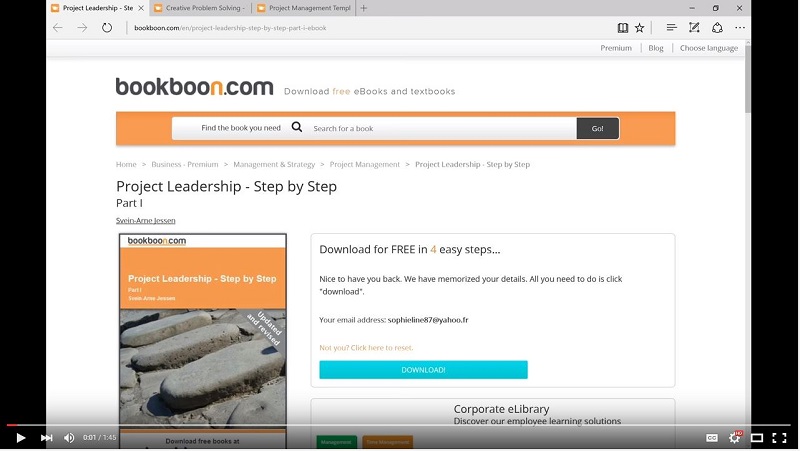Project Launch Stage – How to get a project properly running!


Have you ever thought about writing a book or undertaking an even bigger project? No matter what kind of project you are planning to carry out, there are certain stages you have to pass through to guarantee your project’s success. One important stage to take a closer look at is the launch stage.
In this article, entrepreneur, author, coach and project management thought leader Mounir A. Ajam will explain what you should consider when it comes to launching a project – based on the application of The Customizable and Adaptable Methodology for Managing Projects™ (CAM2P™ Model).
The case study used is the one of “Writing a Book Project.” This project is very small and simple; it is mostly a single person project and easy to follow and understand. Take a look and bear these tips in mind when approaching a new project!
The stage components
Based on the above, the components for this phase are:
1. Define the basic requirements
2. Establish the high level project management plan
3. Stage gate 3: alignments and decision on whether to proceed or not
Basic Requirements
The main sections of the basic requirements document are:
1. Description of desired output and project
2. Requirements, characteristics, deliverables
3. Initial work breakdown structure (WBS)
4. Project boundaries (what is in scope, what is out of scope)
5. Constraints and assumptions
6. . Acceptance criteria
7. Success factors
Description of desired outcome and project
As we have already established this project is about writing a book and the book is about the Customizable and Adaptable Methodology for Managing Project. Therefore, the product of this project is a book that provides extensive details to explain the model and its various components.
Requirements, characteristics, deliverables
1. Explain the various concepts, phases, stages, gates, and major deliverables in sufficient details, where project teams can use the book as a guide.
2. Simplify the explanations in order for professionals who are new to project management, or with limited experience, to understand it.
3. Cannot fall in the trap of over simplification; then the book shall be substantial enough to be appreciated by experienced project managers.
4. The book shall include references to global standards and other project management resources to validate the concepts.
5. Need to seek the input of SUKAD team members and other professionals not associated with SUKAD. The input is required to identify potential gaps in the writing or concepts that are not clear, that do not belong in the book or that are missing from the book.
6. Ensure that the writing will not lead to any copyrights violations; therefore, all external information must include the source.
7. The book to include graphics, charts, examples, and stories to enhance the chance of understanding by the readers.
8. Include unique images, prefer designed specifically to the model.
Project boundaries
What is not included in this project are:
1. Publishing: the publication of this book is outside the scope of this project; this project is only about writing the book.
2. Translation: the intent is to publish this book in English and Arabic. The initial version will be in English and we will later have the Arabic version, another project.
3. Intellectual property protection: It is also the intent that such model and publications will protected via copyrights and trademarks where possible. This is also outside the scope of the project; consider during the publishing project.
Constraints and assumptions
We documented the constraints and assumptions in the project authorization document and our review at this time lead us to conclude that what we have documented still stands and there are no other items to consider at this stage.
Acceptance criteria
To define the acceptance criteria we will follow a subjective and qualitative approach and will consider three factors:
1. Acceptance by the SUKAD team; in comparison to the established requirements.
2. Acceptance of the reviewers who are not associated with SUKAD.
3. Management to review the feedback from the previous two activities and incorporate the relevant review comments in the final edition.
We will accept the project if all requirements are met.
Success factors
Success, on the other hand, is not easy to measure during the life of this project and most elements of success would be in the future after this project is closed.
The success element that we can measure before project closure is:
1. Most reviewers view this to be an acceptable work worth publishing.
Other success elements that we can only measure later:
1. A recognized publisher willing to publish, although, we will not know this until the follow up, publishing project.
2. Satisfaction surveys:
a) Success is achieved if clients who receive the book for classes give it an average satisfaction-rating equal or greater than 70%.
b) Outstanding success is achieved if the satisfaction level is higher than 85%.
3. Other factors we would consider with publishing the book project; such as number of copies sold, and number of endorsements.
a) We will consider the project a success if we sell more than 1,000 copies within the first year.
b) We will consider the project a major success if we sell more than 3,500 copies within the first year.
c) Finally, an outstanding success is achieved if we reach 7,000 sold copies within a year.
If you would like to learn more about what makes a successful project, you shouldn’t miss Ajam’s free eBook “Project Management: the CAM2P™ Model”.



